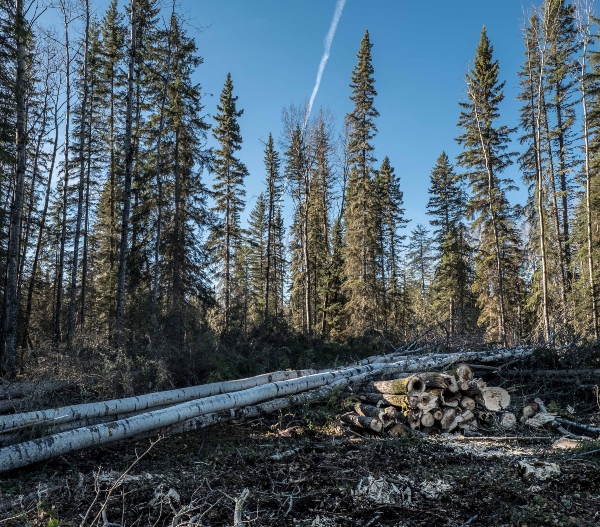Conclusion
Responsible forest management requires a clear understanding of how forestry operations impact land cover and biodiversity; monitoring can help identify opportunities for improvement. The land cover and biodiversity indicators in this report establish the current conditions, and in some instances trend, that can be used to evaluate forest management objectives.
In this report we describe the current status of land cover and biodiversity in the Al-Pac FMA area.
Specific results of note include:
- As of 2017, the total human footprint across the Al-Pac FMA area was 8.5%—a 4.8 percentage point increase from 1999. Covering 5.5% of the Al-Pac FMA area, forestry was the largest human footprint, followed by energy footprint which covered 2.1%. After we accounted for regeneration, the effective forestry footprint was 4.0%.
- Overall, 91.5% of the Al-Pac FMA area is composed of native habitat with a 0 m buffer from human footprint, with 23.8% of this native habitat being 500 m or further away from human footprint.
- The status of biodiversity as measured by the Biodiversity Intactness Index is 94.6% in the Al-Pac FMA area.
-
Predicted intactness of species associated with old deciduous/mixedwood forest in the Al-Pac FMA area was high for all assessed taxa, ranging from 90.3% intact for old-forest birds up to 93.3% intact for vascular plants and mosses. However, intactness was lower for some individual species.
-
Habitat suitability declined between 2010 and 2016 for each taxonomic group as estimated by biodiversity intactness.
Results from this report support efforts by Al-Pac to maintain biodiversity while also supporting conformance to the FSC Canada National Boreal Standard. There is significant opportunity for forest managers to “maintain the integrity of the boreal forest ecosystem” and make informed and deliberate choices about the future of this ecosystem. We have identified several areas for continued attention:
- As part of cumulative effects management, manage and minimize human footprint, including linear footprint, in order to maintain and/or restore interior native habitat.
- Managing older deciduous and mixedwood stands to maintain habitat for species that depend on these forests, including several species at risk (e.g. Black-throated Green Warbler, Canada Warbler).
- Ongoing support of efforts to protect Woodland Caribou and manage/restore Woodland Caribou habitat
As development continues to occur in the Al-Pac FMA area, the ABMI will continue to measure and report on the changing state of land cover and biodiversity. We look forward to the next five-year update on the status of biodiversity in the Al-Pac FMA area.

Photo: Jesse Cruz, FSC® Canada - 2017





